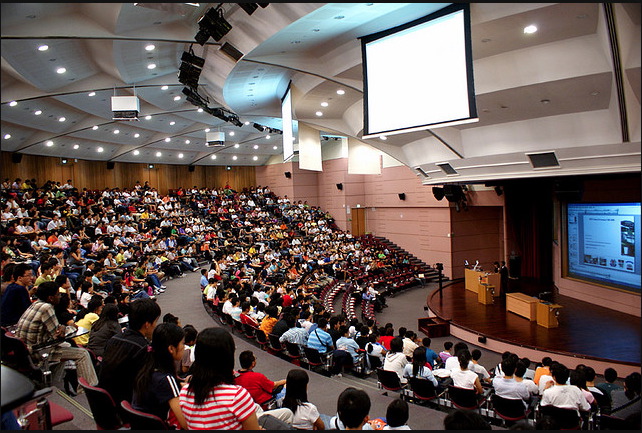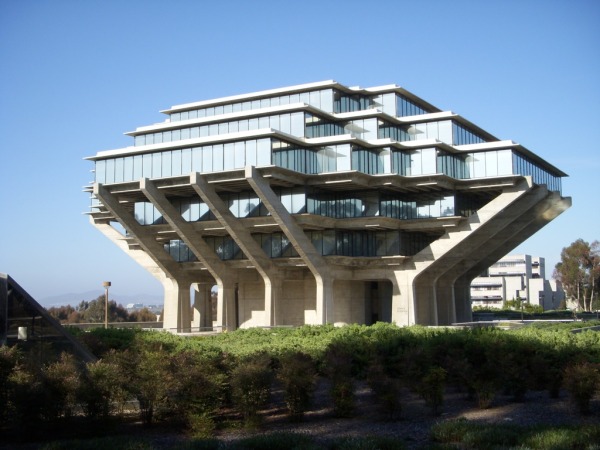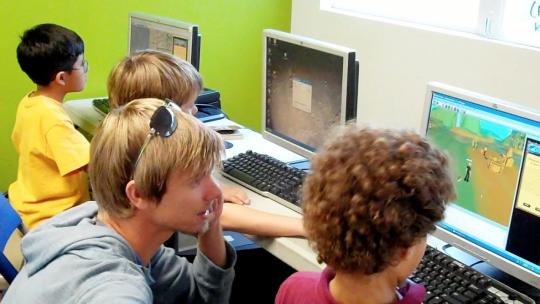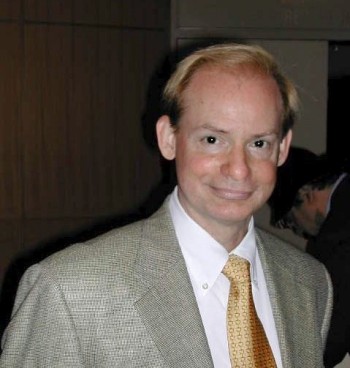Innovation Research: From Here to Where?
 Saturday, November 24, 2012 at 02:16PM
Saturday, November 24, 2012 at 02:16PM Traditional Research seeks to understand how things are, but we also need research that explores how things might be, and especially how things might be better: Innovation Research.
The theoretical and experimental natural sciences search for fundamental, unvarying, universal principles and relationships, and where they exist all future possibilities are already included in generalizations from the way things are now. But when the social and applied sciences take on this natural science paradigm they too easily focus only on understanding what is and fail to pursue research into how things could be.
Literature, art, design, and engineering more naturally seek to go beyond the actual and construct visions and prototypes of the possible. Their constructions depend on deep knowledge of the actual, both what has been historically and what currently is. But they much more often point us toward what could be and in fact take steps toward bringing new possibilities into being.

In the image above, we see a "convivium" at an outdoor local produce market, part of a design of the Nutrire Milano (Feeding Milan) project of a group of Italian social service designers. They imagined, designed, and prototyped a better future (see their design planning image below).
It may not be true that whatever we can imagine we can eventually do, but it is certainly the case that we are not likely to produce better futures that we have not first imagined. Imagination, conceptualization, envisioning, and design are the first steps. Beyond that we need to build prototypes and experimental systems and explore their workings in real contexts of use, because the complexity of our interactions with anything does not allow adequate purely theoretical prediction of all the entailments of our innovations.
The relatively new field of Design Research has been exploring these issues for some time now (e.g. Koskinen et al., Design Research through Practice, 2011), bringing together insights from the natural sciences and engineering, industrial and interaction design, and the arts. A key contribution has been the development and refinement of tools for Innovation Research, and I believe that the further development of such tools, including the use of video and multimedia, sketches and narratives, computer and role-play simulations, virtual worlds and scenario gaming, and the construction and deployment of prototypes not only of artifacts, but of systems and activities, can be the foundation of productive Innovation Research.
Contemporary society is producing new technologies at an unprecedented rate, but our ageing social institutions, from schools and universities to governments and corporations are rapidly becoming obsolete, unable to perform the functions we expect of them. Innovation Research needs to address such critical problems as alternative modes of learning and education beyond the old-fashioned classroom and lecture-hall models; more effective ways of apportioning decision-making among different levels of government; more flexible networks of small-scale enterprises to replace behemoth global mega-corporations. Our healthcare systems are not becoming more effective in promoting positive health, they are just becoming bigger and more expensive. Our schools and universities are not helping students learn to think and create, they are just mass-producing more and more credentials that mean less and less. Our governments are centralizing power in larger and more numerous bureaucracies which are unable to perceive much less help solve the everyday problems that actually matter to people’s lives. Global corporations are producing unprecedented concentrations of wealth in fewer and fewer hands while offering us gaudy beads and trinkets and deceptive investments instead of goods and services that would really make our lives better.

Yes, there is innovation already, but there is no systematic enterprise of innovation research for the betterment of life that addresses the need to re-design basic social institutions as well as add new technologies to our collection of social tools.
Traditional research will continue to help us understand how things are and how they have been in the past, and innovative engineering makes great contributions to the techniques of getting us from here to there.
What we need is systematic and creative Innovation Research to help us answer the more basic question: From here to Where?
Re-Engineering the Research University
 Friday, January 20, 2012 at 11:23PM
Friday, January 20, 2012 at 11:23PM 
And there is no incentive in the system to make things any better.
 Jay Lemke |
Jay Lemke |  3 Comments |
3 Comments | Making Trouble
 Saturday, May 28, 2011 at 05:21PM
Saturday, May 28, 2011 at 05:21PM I have a new home and now a new website and blog.
Having moved from New York to the University of Michigan, and now to the University of California in San Diego, it was time to re-do a website whose design goes back 15 years and make it independent of any of my academic homes. With a new blog, re-located from Blogspot, I'm looking to make trouble more than ever!

This new website re-packages most of the content from Jay Lemke's Online Office, my old website at the University of Michigan, including popular features like the New Researchers Guide, and adds pdfs of many of my papers on New Media and Learning, Science Education, Discourse Analysis, Multimedia Semiotics, Digital Games, etc. It also includes new work since the end of 2007.
In my new home at LCHC, the Laboratory for Comparative Human Cognition, at UC San Diego, I'm working on some new research projects on integrated approaches to studying feeling and meaning (aka affect and cognition) and on play and learning with new media.

Already in my blog are short discussions of the emotional side of scientific images, why remix culture trumps intellectual property rights, going beyond schooling as a form of education, the future of democracy as a political ideal, and the moral dimensions of learning. New postings will make trouble around issues of emotion in learning and science, new media cultures, social dynamics, and education, sexuality, and policy.
Welcome! Explore the whole site, scroll down the blog, and come back for new additions appearing here soon.
 Jay Lemke |
Jay Lemke |  2 Comments |
2 Comments | The Leader of the Stable World??
 Sunday, March 20, 2011 at 04:30PM
Sunday, March 20, 2011 at 04:30PM So, "the Leader of the Free World" is obsolete, a relic of the old Cold War. But the US used to stand for something. Our international support among people used to come from the belief that we stood for freedom and democracy (whether we actually did or not).
Now, with a supposedly liberal President, we hemmed and hawed on Egypt until the last minute, we almost saw a total massacre in Libya, we have in fact given tacit backing to violent suppression of pro-democracy movements in Bahrain, Yemen, and who knows where else (Saudi Arabia?). We have defended "stability", not democracy. Not the Free World, but the Stable World.
Even in the first Gulf War, it was all about not allowing the status quo to change. Iraq had a legitimate historical claim to Kuwait, which was taken away from them and made an independent sheikdom by the British to protect their naval bases and later the oil. The US was horrified that anybody might try to change the sacred order of things. Anybody other than us, that is.
The Iran hostage crisis came about mostly because Carter listened to Kissinger's advice that we had to give sanctuary to a dictator (the Shah), because he was OUR dictator (one of many). Mubarak in Egypt was another one of OUR dictators. My taxpayer dollars have been going to dictators all over the world, to equip their armies to use against pro-democracy movements.
We're not really interested in democracy in Iraq now, or Afghanistan (obviously), or (Allah forbid!) Saudi Arabia. We tut-tut about democracy in China. We have no credibility at all when we talk today about freedom and democracy in Cuba, or Russia, or North Korea, because no one believes we are looking out for anything except our own interests. Correction: the global financial interests based here.
Why do so many Islamic people hate the US? (1) Because we continued to support Israel no matter how brutal or illegal their actions toward the Palestinians, and (2) because we continued to support oppressive dictatorships from Egypt (until now) and Saudi Arabia (and the Gulf States) to Pakistan. Because we are allied with their enemies all around the world. The World Trade Center fell because it symbolized US-backed oppression all across the Islamic world.
We just missed a rare opportunity to prove otherwise. If we (i.e. Obama) had spoken out early, clearly, and impressively in support of the Egyptian revolution, the Libyan revolution, and the movement in Bahrain (at least), a lot of Moslems might have had second thoughts about donating money to Osama bin Laden.
ALL our leaders believe that US longterm strategic interests require that we support dictatorships and maintain "stability". They are all wrong. And they are putting all of us on the wrong side of history.
Feeling Science
 Monday, July 19, 2010 at 07:32PM
Monday, July 19, 2010 at 07:32PM








